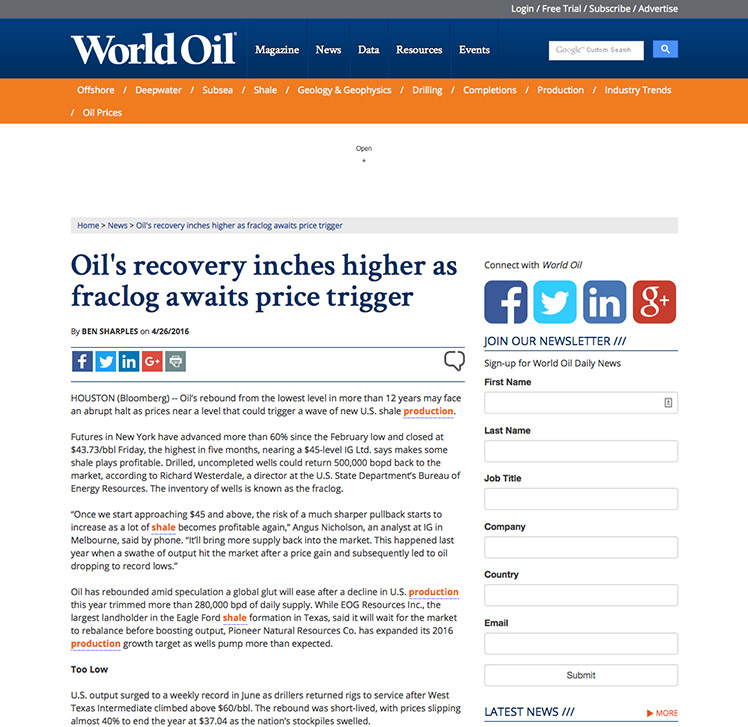US Frackers Keep Adding Barrels lweb.es/f1428 9.20.2016
Nimble U.S. shale oil producers continue to show an uncanny ability to squeeze more and more crude from new wells, allowing them to do more with less as they try to weather another dip in oil prices to $40 a barrel, so they are still seeing output gains from improved well designs and fracking techniques. The pace of innovation is increasing. Pioneer Natural Resources said it was introducing its third generation of well completion techniques, called version 3.0, using even more sand and water than the super-sized volumes introduced as version 2.0 earlier in the price crash to pull more oil out of rock. For its part, Devon Energy Corp has cut costs to drill and complete new wells by 40 percent and plans to cut $1 billion in costs this year.


